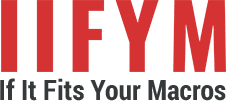
The Big Question My Clients Ask: “What Should I Focus on First?”
A few years ago, one of my clients sat across from me, genuinely frustrated.
He’d been lifting for months, cutting out junk, walking daily, and still wasn’t sure if he was losing fat, gaining muscle, or spinning his wheels.
He asked me:
Anthony, should I focus on fat loss first, or try to gain muscle? What about body recomposition? And do I really need to use a macro tracker for all this?
If you’ve ever asked yourself something similar, you’re not alone.
This confusion is exactly why I built Macro Max: a macro tracking app that helps real people make real progress toward goals like fat loss, muscle gain, and body recomposition, without overthinking every bite.
But before we talk about tools, let’s get clear on the actual goals.
Fat Loss, Muscle Gain, Body Recomposition: What’s the Difference?
A lot of people use these terms interchangeably, but each has its own approach, nutrition strategy, and expected results.
Let me break them down in simple terms:
Fat Loss (Cutting Phase)
- Goal: Reduce body fat while preserving muscle mass
- Nutrition: Calorie deficit with high-protein intake
- Macros: Often 30 – 40% protein, moderate carbs, moderate fat
- Ideal For: People who want to lean out without sacrificing strength
Want to dial in your numbers? Use our Macro Calculator to get your macros for cutting and macros for weight loss, customized to your goals.
Muscle Gain (Bulking Phase)
- Goal: Add lean muscle mass while minimizing fat gain
- Nutrition: Calorie surplus with consistent resistance training
- Macros: Higher carbs (40–55%) for energy, 25–35% protein, balanced fats
- Ideal For: Those with a solid training base looking to build strength and size
Yes, you can gain muscle without tracking, but it’s easy to overshoot or undershoot your intake. A good macro tracker removes the guesswork.
Body Recomposition
- Goal: Lose fat and gain muscle at the same time
- Nutrition: Precise balance and often near maintenance calories
- Macros: High protein (30–40%), carbs cycled around training, moderate fat
- Ideal For: Beginners, or returning lifters, or those with body fat to lose and strength to gain
Recomp is tricky without a solid nutrition structure. A quality macro tracking app helps you stay in that sweet spot: not too low, not too high.
Bonus: Studies show that recomposition is most effective when protein intake is high, and resistance training is done consistently 2 to 4 times per week【Hudson et al., 2020】【Tagawa et al., 2021】【Moon et al., 2020】.
Want an app that adjusts with your goals; whether you’re cutting, bulking, or recomposing?
Macro Max helps you calculate macros, log food quickly, and adapt your plan as your body changes.
Can You Really Lose Fat and Gain Muscle at the Same Time?
Short answer? Yes, but only if your plan is dialed in.
This is what we call body recomposition. And it’s not a myth. It’s been backed by research, and I’ve seen it happen with countless clients using our macro tracker.
Here’s the key: recomposition works best when you’re doing three things consistently:
- Eating enough protein (30–40% of your daily intake)
- Strength training at least 2–4 times a week
- Tracking macros closely so you’re not under- or overeating
One of the biggest mistakes I see is people eating too little while training hard, thinking that more restriction equals faster results. The truth is, without the right fuel, you’ll burn muscle right along with fat.
Studies like the one from Hudson et al. (2020) show that protein distribution throughout the day directly impacts lean mass retention during fat loss. And according to Tagawa et al. (2021), even modest increases in protein intake can significantly boost muscle mass during recomp.
So yes, you can absolutely lose fat and build muscle, at the same time, if you’re strategic about it.
And this is where a macro tracking app becomes so powerful.
Because unless you’re measuring what goes in, how can you fine-tune what’s coming out?
Why Tracking Macros Matters, Especially for Recomp
Let me be honest here: recomp is precision work.
You’re trying to do two opposing things at once, which means you need to be strategic with every calorie and macro you consume.
That’s why just “eating clean” or “watching portions” won’t cut it if you’re serious about changing your body composition.
Here’s why I always recommend using a macro tracker; especially for body recomposition:
Macro Tracking Lets You:
- Create a balanced macro plan tailored to your body and activity (using formulas like Mifflin-St Jeor BMR and TDEE)
- Hit daily protein goals consistently, essential for muscle growth and repair
- Adjust carbs/fats dynamically based on workout days and recovery needs
- Avoid over-restricting calories, which can kill muscle retention
- Measure and correct small errors before they stall your progress
Apps like Macro Max go a step further by using an adaptive macro plan, meaning your targets shift based on your actual intake and weight trends.
That’s not just smart. It’s science-backed.
Studies show macro tracking apps improve both adherence and outcomes in body recomposition, fat loss, and long-term weight maintenance【Islam et al., 2020】【Ghelani et al., 2020】.
You could guess your way through recomp. But why risk it? A free macro tracking app makes the process simpler, smarter, and a whole lot more successful.
The Recomp Traps: Where Most People Go Wrong Without Tracking
I’ve seen it over and over again. People trying to transform their body through recomposition, but spinning their wheels because they’re not tracking.
Here are the biggest mistakes I see when someone skips using a macro tracker:
- Eating too little to build muscle
Most people think fat loss means cutting calories aggressively. But in recomposition, you need enough fuel to build or maintain muscle, especially protein and carbs around your training. - Eyeballing portions
“Looks like 30 grams of protein” usually isn’t. If you’re serious about changing your body, estimating isn’t enough. A macro tracking app ensures accuracy meal to meal, day to day. - Ignoring protein timing
Multiple studies (like Hudson et al., 2020) show that spreading protein across the day helps with muscle preservation and growth. That’s tough to do if you’re not logging. - Not adjusting when progress stalls
Recomp takes patience. But if you’re not tracking your weight, intake, and training together, it’s hard to know when and how to adjust. The right app takes care of that automatically.
Remember, body recomposition isn’t intuitive. You can feel like you’re doing everything right, and still be slightly off in a way that prevents real change.
That’s why I built Macro Max: to simplify the science and help you avoid these common traps.
Tracking Macros for Fat Loss, Muscle Gain, and Recomp: What Changes?
Now let’s talk practical strategy. Because while all three goals benefit from macro tracking, how you set up your macros will vary based on your goal.
Here’s a quick breakdown:
Fat Loss (Cutting)
- Calorie intake: Slight deficit (usually 10–20% below maintenance)
- Macros for weight loss
- Focus: Preserve lean mass while burning fat
A macro calculator will help you find your cutting numbers, but a good macro tracker keeps them updated as your weight changes.
Muscle Gain
- Calorie intake: Moderate surplus (5–15% above maintenance)
- Macros for muscle gain
- Focus: Fuel training and maximize recovery
Tracking helps prevent excessive fat gain while you bulk. which means less time cutting later.
Body Recomposition
- Calorie intake: Near maintenance (with slight day-to-day adjustments)
- Macro plan:
- High protein
- Carbs cycled based on workout days
- Moderate fats
- Focus: Simultaneously lose fat and build muscle
Apps like Macro Max really shine here. They use a dynamic algorithm to automatically tweak your macro targets based on how your body responds. So you’re always progressing, without needing to redo your plan manually.
Macro Max vs Other Macro Tracking Apps: What Sets It Apart?
There are a lot of apps out there for tracking macros.
I’ve used most of them, and so have my clients.
But here’s what I noticed. Many of them are either too complicated, too bloated with features nobody uses, or too focused on just calories without real macro control.
Let’s look at how Macro Max compares with other popular apps like MyFitnessPal, Cronometer, and MacroFactor.
| Feature | Macro Max | MyFitnessPal | Cronometer | MacroFactor |
| Adaptive macro adjustments | Yes | No | No | Yes |
| Personalized macro goals | Yes | Limited | Moderate | Yes |
| Barcode and label scanner | Yes | Yes | Yes | Yes |
| AI-driven meal logging | Yes | No | No | Yes |
| Real-time feedback and suggestions | Yes | No | No | Yes |
| Built-in macro calculator | Yes | No | Yes | Yes |
| User-friendly interface | Yes | Mixed feedback | Less intuitive | Yes |
| Free version with macro features | Yes | Yes | Limited | No |
So what makes Macro Max different?
- It’s built by people who live and breathe macros.
- It’s designed to support fat loss, muscle gain, and body recomposition without needing a coach or spreadsheet.
- It uses real-time adjustments, based on your goals and actual progress, to keep you moving forward.
And unlike other apps, Macro Max is a free macro tracking app you can start using today. No gimmicks. No paywall for basic features. Just accurate, efficient macro tracking that works.
Real People, Real Results: How Users Are Using Macro Max for All Three Goals
I could talk all day about how great Macro Max is, but I’d rather show you what real users are doing with it.
Samantha (Fat Loss and Recomp)
She came to me post-pregnancy, looking to lose weight and feel strong again.
She used Macro Max’s custom macro plan to ease into a small calorie deficit.
After six months, she had lost 18 pounds of fat and gained visible muscle definition. Her confidence is through the roof.
Jason (Muscle Gain)
A long-time lifter, Jason struggled with staying lean while bulking.
With Macro Max’s dynamic adjustments and macro calculator, he stayed within 10 percent of his goal weight while adding five pounds of lean muscle in four months.
Erin (Body Recomposition)
A busy mom and weekend warrior, Erin didn’t want to do a hard bulk or cut.
She used Macro Max to track macros near maintenance, bumped her protein up, and lifted three days a week. After 12 weeks, she lost body fat and gained muscle. Her clothes fit better and her energy is way up.
What do they all have in common?
They didn’t guess. They tracked with intention.
And they used a macro tracking app designed to support their specific goal, whether that was cutting, bulking, or recomping.
Is a Macro Tracking App Worth It for You? Here’s How to Decide
If you’ve made it this far, you’re probably wondering…
Is tracking macros actually worth the effort?
Here’s how I always break it down for clients:
You might not need a macro tracker if…
- You’re already getting consistent results without tracking
- Your goal is simply to maintain and you feel in control of your nutrition
- You find any type of tracking leads to obsession or stress
But for most people who are trying to change their body, whether it’s fat loss, muscle gain, or recomposition, the answer is a clear yes.
Here’s why a macro tracker is worth it:
- It gives you clarity on what and how much you’re eating
- It shows you how macros actually affect your results
- It helps you adjust in real-time instead of waiting for a plateau
- It creates awareness, which leads to better habits long term
And best of all? A free macro tracking app like Macro Max removes all the guesswork — while still being simple to use.
According to multiple studies, macro tracking apps improve weight loss outcomes and increase long-term adherence to nutrition plans compared to non-tracking strategies 【Islam et al., 2020】【Ghelani et al., 2020】.
If your goal is measurable, your approach should be too.
How to Start Macro Tracking Today (Without Overcomplicating It)
One of the biggest myths I hear is that tracking macros is complicated.
It doesn’t have to be.
Here’s exactly how I recommend getting started with macro tracking — whether your goal is cutting, bulking, or recomping.
Step 1: Calculate Your Macros
Start with a reliable macro calculator that factors in your age, weight, activity level, and goal.
This gives you a baseline for protein, carbs, and fats.
Step 2: Choose a Simple Tracking App
Download a macro tracking app that makes food logging fast and frustration-free.
Macro Max is my go-to because it has:
- A massive verified food database
- Barcode scanning
- Meal saving and suggestions
- Real-time macro updates as your weight changes
Step 3: Start Logging One Meal at a Time
You don’t need to be perfect from day one.
Start with one meal per day, or just track your protein. Build momentum.
Step 4: Adjust Based on Results
Your body gives you feedback. If you’re not seeing change, check your trends, not just your daily intake.
Macro Max uses a dynamic algorithm to adjust macros automatically, keeping you moving in the right direction.
Step 5: Keep It Simple, Stay Consistent
Don’t chase perfection. Chase consistency.
The people who win are the ones who show up and track most days, not just when motivation is high.
Final Thoughts: The Smartest Way to Track Your Progress
I’ve worked with people at every stage; from beginners trying to lose their first 15 pounds, to athletes training for body recomposition. And the biggest breakthroughs always come from one thing: clarity.
When you track macros, you stop guessing. You start understanding.
Whether your goal is to drop fat, build lean muscle, or do both at the same time, a macro tracking app gives you the tools to get there faster — and stay there.
And with Macro Max, we’ve made it simple.
You don’t need to be perfect. You just need to be consistent.
You’ll get adaptive macro goals, quick food logging, real-time progress feedback, and a better understanding of how your body responds to food.
If you’re ready to finally stop spinning your wheels and start making measurable progress, it’s time to give macro tracking a real shot.
Try our free macro tracking app today and take the first step toward smarter, more sustainable results.
Frequently Asked Questions
1. Is it really necessary to track macros for fat loss or muscle gain?
Not always, but tracking macros gives you the clearest path to results. If your goal is fat loss, muscle gain, or body recomposition, using a macro tracker helps you dial in your nutrition with precision. It removes guesswork and helps you stay consistent with your goals.
2. Can I lose fat without tracking macros?
Yes, but it’s harder. You can lose fat by eating in a calorie deficit, but without knowing your macro breakdown, you risk losing muscle along with fat. Macro tracking helps you preserve lean mass by keeping your protein intake high and aligning your meals with your training.
3. How accurate is a macro tracking app like Macro Max?
Very accurate, especially when using a verified food database, barcode scanner, and portion controls. Macro Max offers adaptive tracking and a large food database to ensure consistent and reliable logging, which is key for goals like recomping or building muscle.
4. What’s the best macro tracker for body recomposition?
The best app is one that adjusts with your progress. Macro Max uses a dynamic macro algorithm to make real-time adjustments based on your intake and weight changes. It supports all goals — cutting, bulking, or recomp — without manual recalculations.
5. How do I calculate my macros for weight loss or muscle gain?
You can start with a macro calculator to get your baseline numbers. For fat loss, a small calorie deficit and higher protein intake works well. For muscle gain, you’ll need a surplus and enough carbs to fuel training. Tracking with Macro Max ensures your numbers stay aligned with your goal.
References
- Holmes CJ, et al. (2021). The utility of body composition assessment in nutrition and clinical practice: An overview of current methodology. NIH
- McCarthy D, et al. (2021). Weight loss strategies and the risk of skeletal muscle mass loss. MDPI
- Pinckard K, et al. (2019). Effects of exercise to improve cardiovascular health. NIH
- Total Force Wellness Column. (2022). Guidelines to progress your physical training over time. U.S. Coast Guard
- Adult activity: An overview. (2023). CDC
- Hudson JL, et al. (2020). Protein distribution and muscle-related outcomes: Does the evidence support the concept? NIH
- Moon J, et al. (2020). Clinical evidence and mechanisms of high-protein diet-induced weight loss. NIH
- Tagawa R, et al. (2021). Dose–response relationship between protein intake and muscle mass increase: A systematic review and meta-analysis of randomized controlled trials. Oxford Academic
- Ghelani, D. P., et al. (2020). Mobile apps for weight management: A review of the latest evidence to inform practice. NIH
- Islam, M., et al. (2020). Use of mobile phone app interventions to promote weight loss: Meta-analysis. NIH
- Overweight and obesity statistics. (2021). NIDDK
- Steps for losing weight. (2023). CDC
- Taylor, K., et al. (2022). Adult dehydration. NIH Bookshelf








